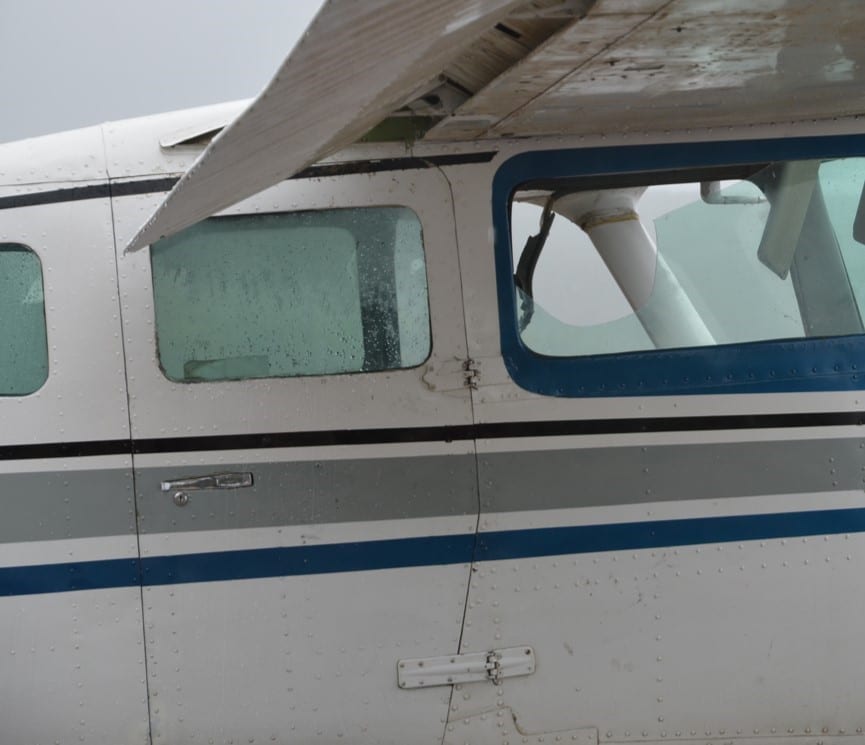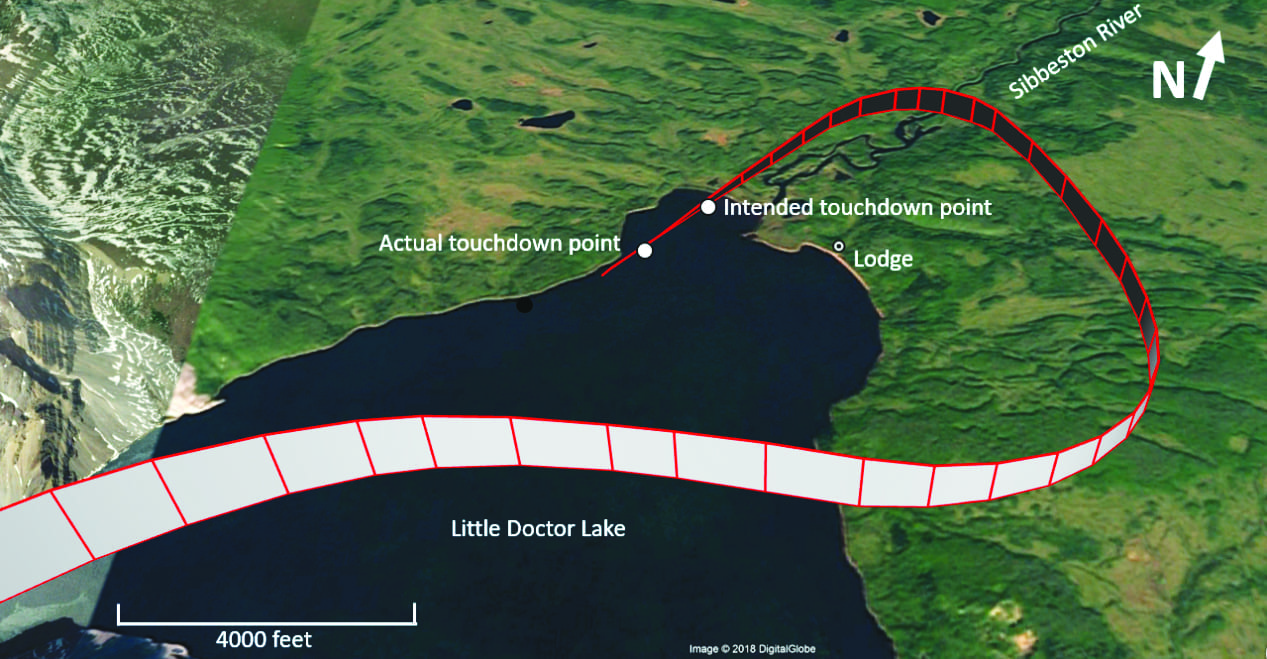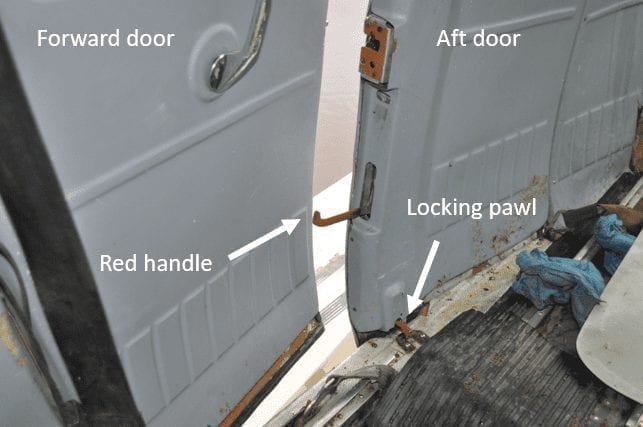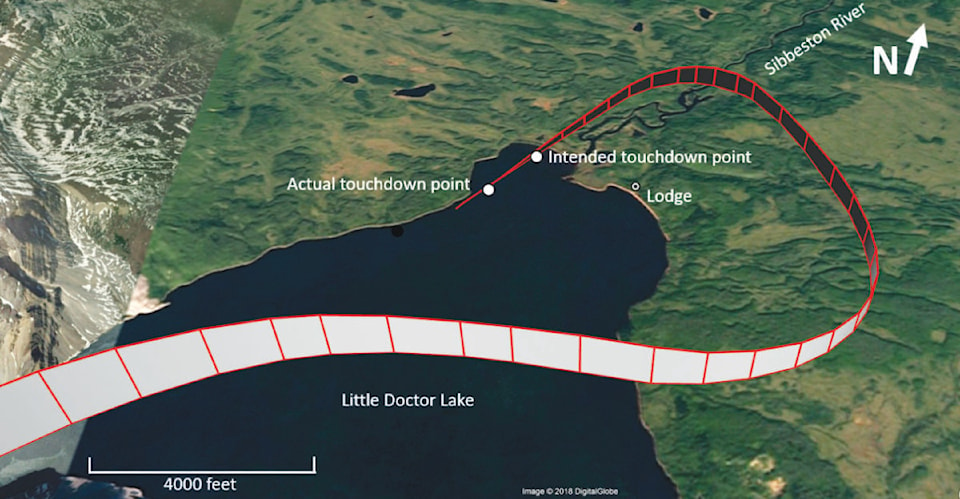An August 2018 crash landing has prompted new safety measures from Simpson Air, according to a Transport Safety Board of Canada report Thursday morning.
Last year, one of the airline's pilots was touring four passengers through the territory aboard a Cessna 206 float plane. It was a smooth flight as the aircraft cut through a gap in the Mackenzie Mountains, and made for Little Doctor Lake.

The aircraft made an 'uneventful' approach until it hit 300 feet, when its rate of descent increased and the plane soon bounced off the water. Its right wing touched water as the aircraft 'nosed-over' in a “gentle” rollover, according to the report.
The tumbling aircraft's windshield broke, and lake water gushed into the cabin and the cockpit. In the water, the pilot couldn't find the door handle, but got free of her seat belt and kicked through the door's window. “Her foot caught the window latch and the window opened outward,” the report stated.
She swam out through the opening. Meanwhile, “The passenger in the front right seat grabbed the passenger who had been seated immediately behind the pilot and propelled her through the window,” the report stated. The remaining three passengers removed their seatbelts but couldn't escape the plane, though they were uninjured by the crash. “No other passengers exited the aircraft,” the report stated.
Further, the wing flaps, at a 20 degree angle, blocked the rear cargo door, the report stated. The door could only open eight centimeters, cutting off the passengers' exit.
Geoffrey Dean, 33, of Castor, AB, Stewart Edelman, 72, of Saskatoon, SK and Jean Edelman, 72 of Saskatoon, SK, died inside the partially submerged fuselage, the NWT Coroner’s Office stated after the crash.

Scraped and bruised, the survivors were on board a nearby boater's vessel within 15 minutes, according to the report. An eyewitness on a nearby beach watched the events unfold and used a SPOT portable tracking device to raise the alarm. The plane's emergency beacon was activated, but submerged.
In a February letter, Natacha Van Themsche, director of investigations for the Transportation Safety Board , said it may be helpful to return the issue of the rear cargo door.
“(Transport Canada) may wish to reassess the suitability of the rear double cargo door as an emergency exit, as described in certification requirements for all Cessna 206 series aircraft,” wrote Van Themsche.
In its report on the fatal incident, released Nov. 14, the Transport Canada said it asked its American counterpart, The Federal Aviation Administration, to issue directives related to the safety of rear cargo doors on that model of Cessna.

The report noted another issue. The aircraft's original carpet floors were removed and replaced with thin rubber matting. The strips were only fixed to one end, and as the plane flipped over, they hung down and blocked the spaces between seats.
“This could have made navigating those spaces difficult and could have added to the confusion as passengers tried to make their way to emergency exits,” the report stated.
Simpson Air takes additional precautions
The report also outlines further safety precaution Simpson Air has taken since the crash.
First, the Cessna 206 will no longer operate on floats. Second, all seasonal float plane staff will receive underwater egress training, and two have already completed this training. Third, all float plane crew members will take a 50-hour bush float course or have 500 hours of previous float experience.
The airline didn't immediately respond to request for comment.
